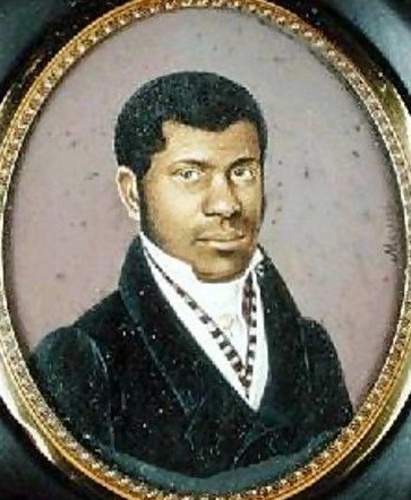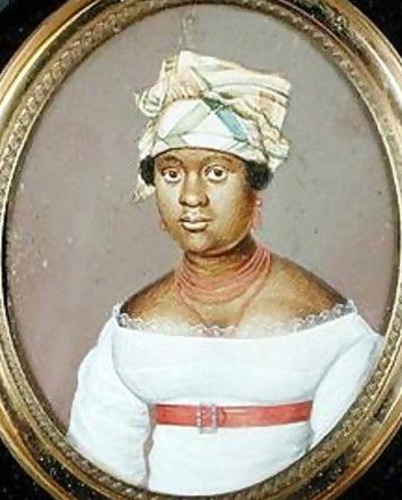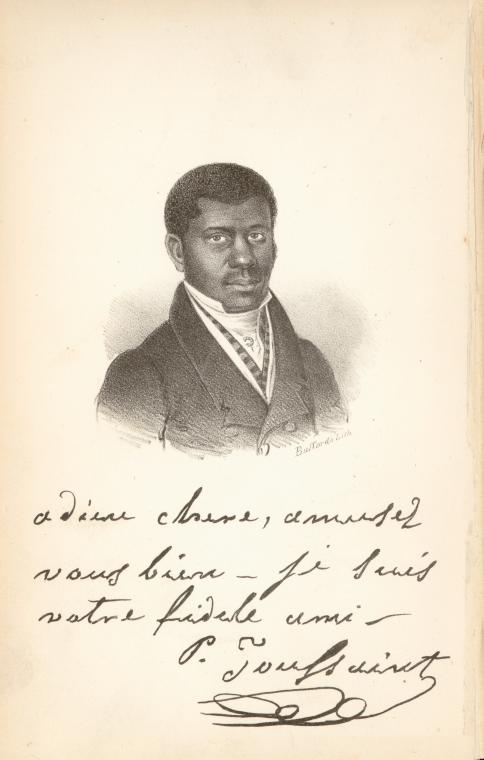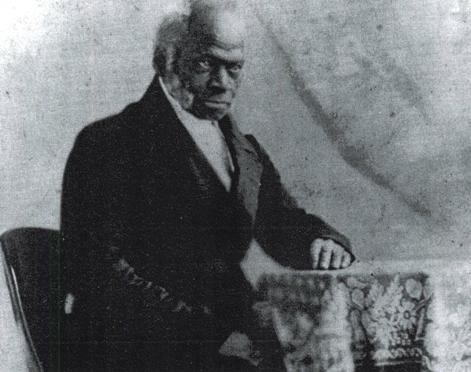Servant of God Pierre Toussaint
(1766-1853)
Born to slavery in Saint Domingue (present-day Haiti), Toussaint came to New York in 1789 with his master, Jean Bérard du Pithon, a French noble and prosperous planter who was fleeing the turmoil unleashed in Saint Domingue by the French Revolution. Two years later, his master died without having been able to recover the family fortune, thus leaving Madame Bérard in poverty. Distressed at the plight of his mistress, Toussaint did not allow her poverty to come to light. He provided for the table by applying his skills as a fashionable hairdresser for the ladies of New York’s high society, served dinners to his mistress and her guests elegantly dressed as butler, and entertained everyone after the meals with the music of his violin.
Given his freedom in 1808, he married in 1811. Because of his virtue, discretion, and admirable wisdom, many people of the upper class brought him their troubles, seeking his advice. His generosity and dedication seemed unlimited, and he became the unknown benefactor of many who had fallen on hard times. He died in 1853, having profoundly marked New York society. Throngs of grateful people, white and black, high and low-born, filled Old Saint Peter’s Church for his funeral. His remains lie today in the crypt of Saint Patrick’s Cathedral, where they gloriously await the day of resurrection and, we hope, the day when he will be honored with the glorious title of “saint.”
__________________________
Due to the fall of the Bastille in and the first sparks of Revolution in their mother country of France, the islands which make up present day Haiti were thrown into utter chaos in 1789. Slaves and workers led by revolutionaries of bad intent, rebelled against their masters and employers.
Hoping to escape the violence, Jean Bérard du Pithon, head of one of the richest families of the islands, fled to New York with his family and Pierre Toussaint, one of his slaves.
Wrongly believing that the revolt would be short-lived, Jean brought little money with him. He soon used up his money and was forced into menial labor. Due to his social status, he was unaccustomed to the strains and difficulties of this type of work and it wore hard on him. Just when it seemed things could get no worse, Jean died in 1791, leaving his broken-hearted widow, Marie Elizabeth with no money, income, or means to obtain either. Realizing the desperation of her situation, Marie fell into a deep depression.
Seeing his mistress so distraught, Pierre was filled with compassion. Though he easily could have taken advantage of the situation to run away and live free, he preferred to remain in the service of his mistress. Moreover, after joyfully completing his day’s chores, he worked as a hairdresser, catering to the wealthy ladies in New York society. Because he had above average talent, this work prospered. But Pierre was uninterested in making money for himself, and gave large sums of it to Marie. He worked so hard, that he not only saved her from poverty, but allowed her to enjoy the same living standards of before her husband’s death.
In his relationship with Marie, Pierre demonstrated a spirit of charity and submission more angelic than human. Pierre often put on great parties for Marie, paying for everything. Once these parties got underway, he would don the attire of a butler, and serve the guests never letting on that he was anything more than his mistress’ faithful servant.
With Pierre’s help, Marie put her life back together. She remarried and regained some of the stability she had lost.
Meanwhile, Pierre saved up a goodly sum which he used to buy the freedom of his sister, and his future wife Juliette. He never once sought his own liberty. Entirely content with his position, he remained a slave until Marie granted Pierre his freedom on her deathbed. The year was 1807, and Pierre was 41 years old.
Once freed, Pierre continued his works of charity. When not dressing hair, he aided plague victims. Together with Juliette, he raised several young abandoned black boys, and found jobs for them.
In 1853, after 85 years of living in accordance with the Gospels, Pierre Toussaint died.
The edifying story of Pierre Toussaint is rarely told today. However, he was once again raised to the forefront in late 2007. Diagnosed with severe scoliosis, six-year-old Joseph Peacock was about to be confined to the use of a back brace until he turned twenty. Encouraged by an article about Pierre Touissaint in The Washington Post published during “Black History Month” Joseph’s mother Lisa, and her husband John prayed to Toussaint asking for their son’s cure.
A couple of days later, Joseph was taken in to be fitted for his brace, when a second set of X-rays were taken, Dr. Sponseller, Joseph’s pediatrician purported shocking results. His back showed a mere 10-degree curve which is within the normal range. When the family asked Dr. Sheila Murphy for a second opinion, she stated, “In my opinion, the reversal of Joey’s scoliosis is not explainable by current medical thinking.”
Immediately the story of Joseph’s cure was sent to Rome where Pierre Toussaint’s canonization process has been open since 1968. If it passes the Vatican’s strict screening process and is proclaimed miraculous, the last obstacle to Toussaint’s beatification will be removed. He will only need one more miracle to be canonized as America’s first black saint.
How beautiful it would be to see Pierre Toussaint canonized in our days. His life stands out in sharp contrast to the radically egalitarian spirit dominating modern society. Pierre Toussaint promoted social harmony while many modern civil rights leaders seem intent on inciting disunity and animosity.
Inherent in this modern egalitarian spirit is a denial of all inequality. Although essentially all men are equal, their accidents are vastly and undeniably unequal. Saint Thomas Aquinas teaches that God created these inequalities so that creation can more perfectly reflect Him and His virtues. Thus, every man must find his place in creation in accordance with his talents and abilities and content himself with filling it to the best of his capacity.
Due to his heroic faithfulness and submission to Marie Bérard, Toussaint practiced a degree of virtue before which kings should bow down in reverence. Through his service he embodied certain virtues and qualities like humility and obedience which even the greatest emperor would never be able to attain.
On the contrary, those who prefer revolt and class struggle are incapable of fathoming the greatness Toussaint gained in this way.
May Our Lady grant that the canonization of Pierre Toussaint finally occurs, raising him to the dignity of the altar where he belongs, and conquering the profound egalitarian errors of our days.
















